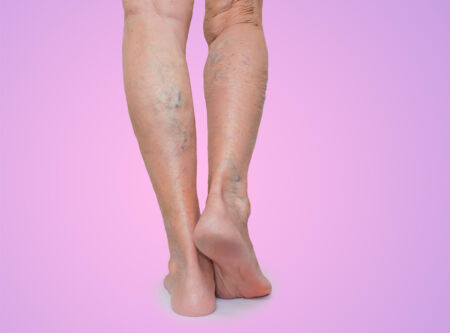
Varicose veins occur because of six common factors. Which one may be the cause of your varicose veins?
If you’re one of the 23 percent of U.S. adults who have varicose veins, you no doubt wonder what causes the enlarged tangles of blue or purple veins along your legs and feet. The truth is, varicose veins develop due to many factors, some of which we cannot control or manage. On the other hand, other risk factors can be identified and possibly mitigated with preventative steps.
Although it’s difficult to completely prevent varicose veins from forming, you have the ability to delay their development if you recognize your risk factors. Consulting with a vein specialist will help you determine whether you are at risk for varicose veins — and how you can maintain healthy veins throughout your life.
Varicose veins occur because of a breakdown in the circulation of blood between the heart and the extremities. Normally, arteries pump blood from the heart to the entire body, while veins return the blood to the heart. The veins are able to do that because small valves in the veins open to let blood rush downward, and then close to push blood upward. This action keeps the blood circulating properly.
Valves in the legs work hardest against gravity because they’re furthest from the heart. As a result, when these valves weaken and blood leaks backwards into the veins, blood accumulates and stretches the vein walls into protruding ropes of varicose veins. When those valves malfunction, it can be attributed to a number of factors. These six are the most common:
In addition to working out and staying active, you can reduce your risk factors with several at-home remedies. Maintaining a healthy weight with exercise and a diet high in fiber, fruits, and vegetables and low in salt can delay the development of varicose veins.
Other self-care tips to try: Invest in a pair of compression stockings. These tightly woven elastic garments compress the leg veins, thereby helping them circulate blood. Also, switch from high heels to low heels, avoid tight-fitting clothing, and elevate your feet above your chest whenever possible to boost blood flow from the extremities to the heart.
Whether your varicose veins are a cosmetic concern or causing you swelling and discomfort, the specialists at the Center for Vein Restoration can examine your veins and discuss treatment options. Although the factors listed here are the most common causes of varicose veins, we’ll review your medical history and health status to determine what may be the reason you have varicose veins — or could be at risk for the condition. We can create a treatment plan that includes both preventative tips and minimally invasive surgeries to permanently rid you of varicose veins. Contact us today for an appointment.